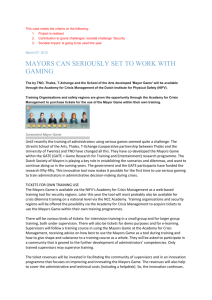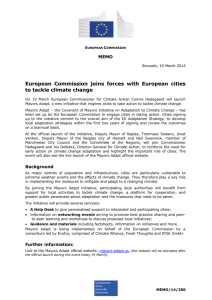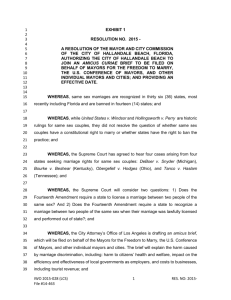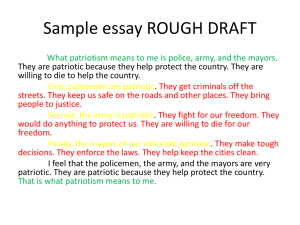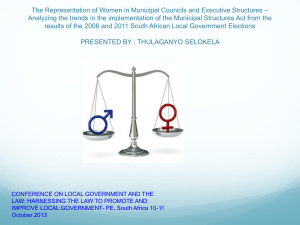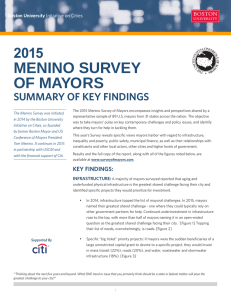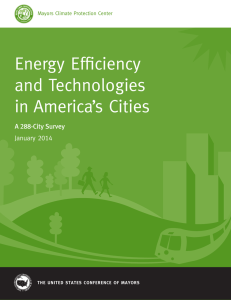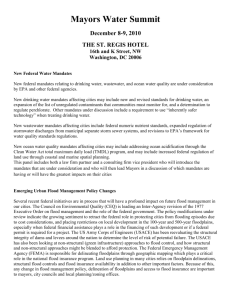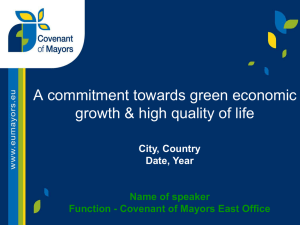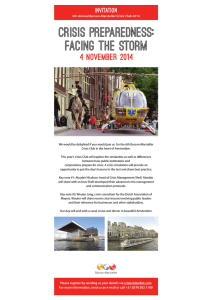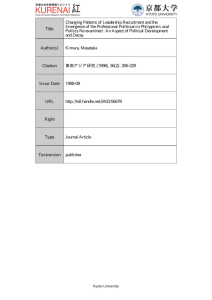1 For Immediate Release Contact: Lina Garcia/lgarcia@usmayors
advertisement
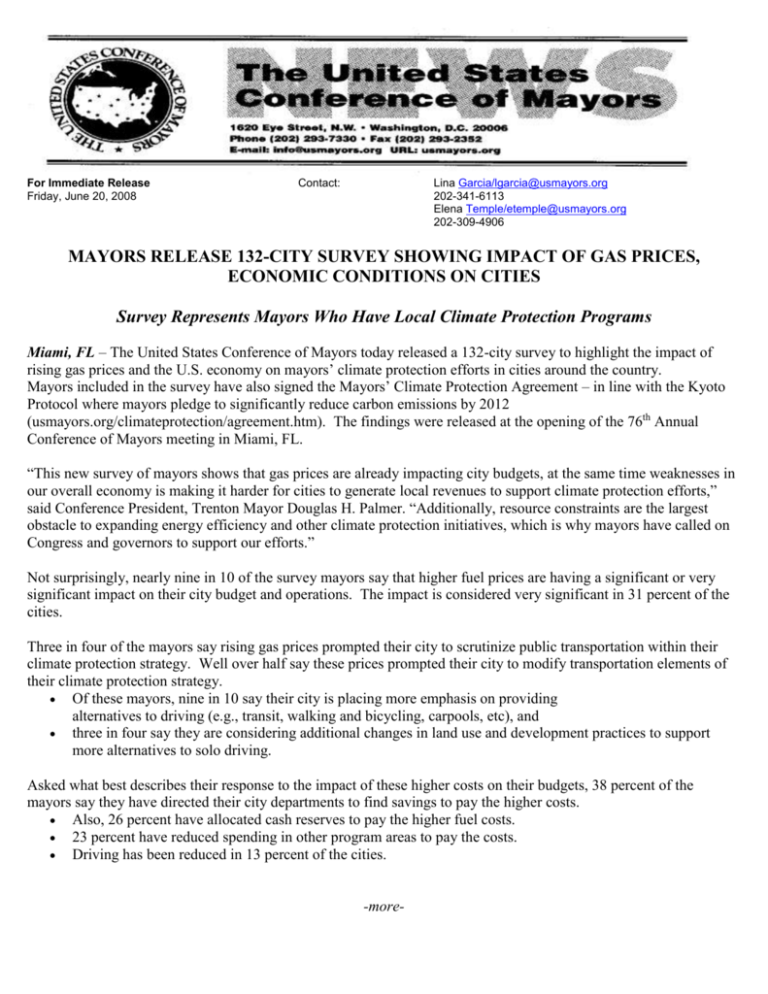
For Immediate Release Friday, June 20, 2008 Contact: Lina Garcia/lgarcia@usmayors.org 202-341-6113 Elena Temple/etemple@usmayors.org 202-309-4906 MAYORS RELEASE 132-CITY SURVEY SHOWING IMPACT OF GAS PRICES, ECONOMIC CONDITIONS ON CITIES Survey Represents Mayors Who Have Local Climate Protection Programs Miami, FL – The United States Conference of Mayors today released a 132-city survey to highlight the impact of rising gas prices and the U.S. economy on mayors’ climate protection efforts in cities around the country. Mayors included in the survey have also signed the Mayors’ Climate Protection Agreement – in line with the Kyoto Protocol where mayors pledge to significantly reduce carbon emissions by 2012 (usmayors.org/climateprotection/agreement.htm). The findings were released at the opening of the 76th Annual Conference of Mayors meeting in Miami, FL. “This new survey of mayors shows that gas prices are already impacting city budgets, at the same time weaknesses in our overall economy is making it harder for cities to generate local revenues to support climate protection efforts,” said Conference President, Trenton Mayor Douglas H. Palmer. “Additionally, resource constraints are the largest obstacle to expanding energy efficiency and other climate protection initiatives, which is why mayors have called on Congress and governors to support our efforts.” Not surprisingly, nearly nine in 10 of the survey mayors say that higher fuel prices are having a significant or very significant impact on their city budget and operations. The impact is considered very significant in 31 percent of the cities. Three in four of the mayors say rising gas prices prompted their city to scrutinize public transportation within their climate protection strategy. Well over half say these prices prompted their city to modify transportation elements of their climate protection strategy. Of these mayors, nine in 10 say their city is placing more emphasis on providing alternatives to driving (e.g., transit, walking and bicycling, carpools, etc), and three in four say they are considering additional changes in land use and development practices to support more alternatives to solo driving. Asked what best describes their response to the impact of these higher costs on their budgets, 38 percent of the mayors say they have directed their city departments to find savings to pay the higher costs. Also, 26 percent have allocated cash reserves to pay the higher fuel costs. 23 percent have reduced spending in other program areas to pay the costs. Driving has been reduced in 13 percent of the cities. -more- 2 Nearly three in four mayors say current economic conditions, specifically local revenue constraints, are adversely affecting their cities’ financial commitments that would help meet the goals of the Mayors Climate Protection Agreement. Nearly nine in 10 mayors report that they have partnered with their local K-12 school system in efforts to achieve Mayors Climate Protection Agreement goals, or they expect to do so in the next year. Partnerships are already in place in 61 percent of the cities. The survey asked mayors to assess the help they have received from other levels of government in their climate protection efforts over the past year. A small group (15 percent) says their state has been very helpful, and an even smaller group (five percent) puts the federal government in this category. On the negative side, 24 percent say the state is not at all helpful in supporting their efforts, and 41 percent say the federal government is not at all helpful. Most of the mayors (61 percent) rate their state government as being somewhat helpful, and just over half say the federal government has been somewhat helpful. Other Key Highlights: Impact of higher fuel prices on city budgets and operations is significant. Fuel costs have forced changes in cities’ spending and priorities. Biggest obstacle to cities’ progress on climate protection is inadequate financial resources. Current economic conditions are affecting cities’ financial commitments to climate protection. State and federal partners in climate protection are considered somewhat helpful, but few get high marks. Partnerships on climate protection have been formed with universities, colleges, and local school systems in most cities. To view the full survey results, please visit www.usmayors.org. The U.S. Conference of Mayors is the official nonpartisan organization of cities with populations of 30,000 or more. There are 1,139 such cities in the country today, each represented in the Conference by its chief elected official, the Mayor.
